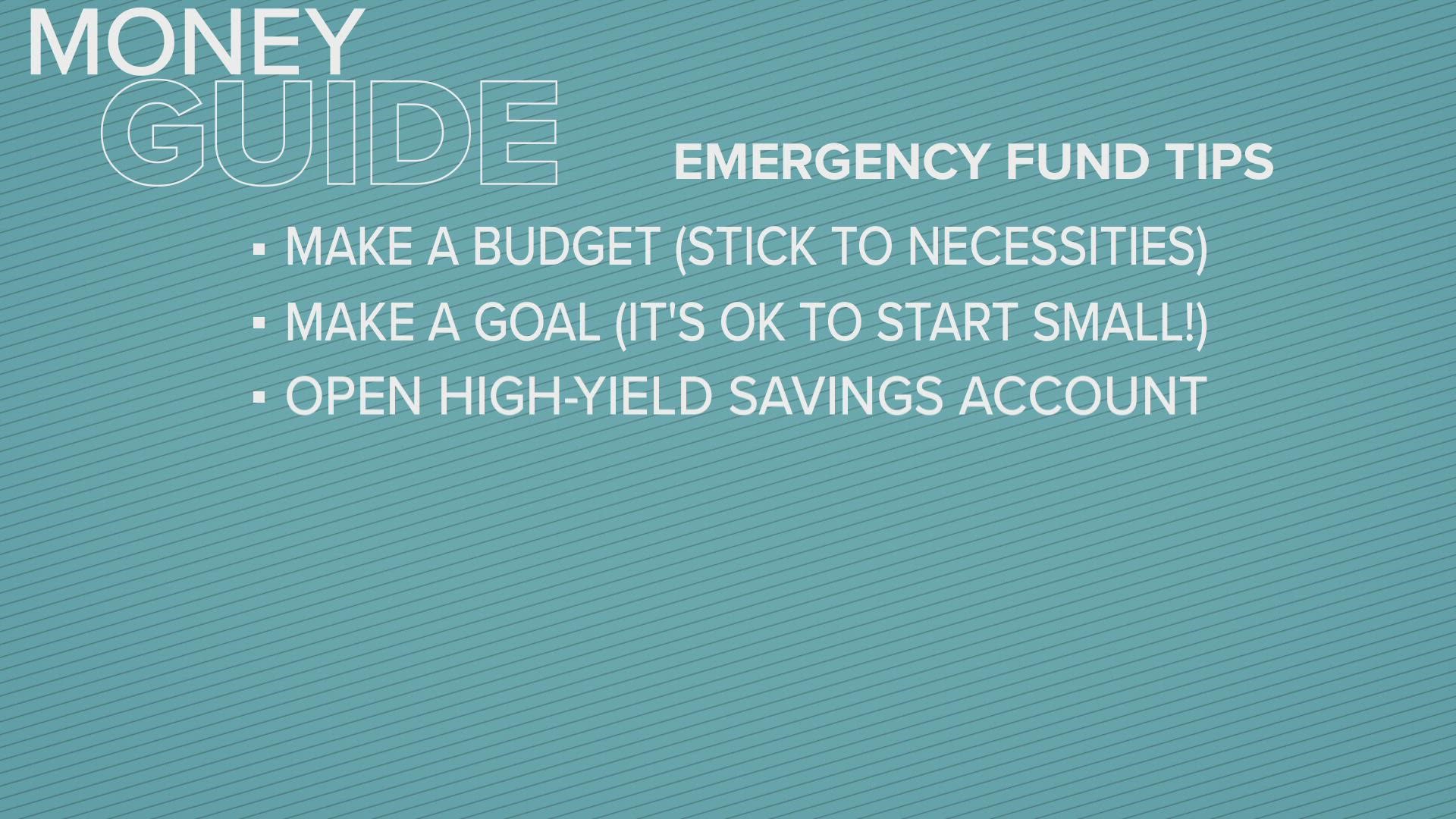GRAND RAPIDS, Mich. — Life is unpredictable, and unexpected expenses can pop up at any time. That's why financial advisors recommend having an emergency fund for those large, unexpected costs. So how much do you need, and what are some tips for getting started?
What is an emergency fund?
An emergency fund is money set aside for any major, unexpected cost. Examples of this include medical bills, major car fixes, or loss of a job.
How much should you try to have saved up?
Most experts recommend anywhere from three to six months worth of expenses. That can be a lot of money! But don't get intimidated.
Here are 5 things you can do to get started, according to Bankrate.com.
1. Make a budget
You need to first know what your monthly expenses are. Making a budget will help you determine that. Keep these expenses to necessities, like house and car payments. Don't include things like entertainment or going to restaurants.
2. Determine your emergency fund goal
Combined with your budget, you can then decide how much you can afford to set aside. Don't be afraid to start small and gradually increase your monthly contribution. Every little bit helps!
3. Keep the money in a high-yield savings account
Banks also frequently offer cash incentives to get people to open new savings accounts, so look for those and try to take advantage.
4. Set up a direct deposit
Automating your monthly contribution can remove the temptation to spend, rather than save.
5. Save unexpected income
Get a bonus at work? Come into some inheritance you don't need right away? Putting at least a part of this "surprise cash" into your emergency fund can provide a big boost to your savings.
►Make it easy to keep up to date with more stories like this. Download the 13 ON YOUR SIDE app now.
Have a news tip? Email news@13onyourside.com, visit our Facebook page or Twitter. Subscribe to our YouTube channel.

